By Peter Giddings
All photos courtesy Peter Giddings unless marked otherwise
Last week Jonathan Sharp wrote up a very nice piece for us about the Firle Hillclimb Revival, with plenty of enticing photos of car guys and girls just having fun with their classics. It certainly hit a note with our readers. Then Peter Giddings emailed us about his experiences driving a Frazer Nash ‘Chain Gang’ at the original Firle Hillclimb in 1963. We begged for more and here is his story:
I could not believe my eyes when I saw your “Firle Hillclimb Revival”, the setting for several of my early attempts at competitive speed hill climbing.” I attach a report from Autosport, July 19, 1963 which reads in part, “Last May P. H. Giddings had rocketed up in 28.69 secs. in a 1928 Frazer Nash fitted with a 1926 A.C. engine, and on Sunday this incredible device did 28.66 secs. to take third place in the most hotly contested class of the day. How this chain-driven car can be coaxed up Firle so quickly only Mr. Giddings knows!”
Working on the Chain Gangs
Of all of the cars that I have raced and owned over the years, the Frazer Nash is the one I hold most dear. Consider the advantages: simple and easy to work on; almost infinitely adjustable gear ratios effected simply by sliding off each individual sprocket and substituting it with one of a different number of teeth; superior road holding; no wheel spin and fierce acceleration.
Ron Godfrey and Archie Frazer-Nash founded GN Cycle Cars about 1909 in Hendon/Wandsworth, England. The cars used 1100 cc JAP V-twin motorcycle engines. The unique feature of the GN was the use of chain drive rather than shaft drive. The cars were further developed, but the introduction of cars like the Austin Seven outclassed the cheap cycle cars. GN went into receivership in 1920 and production ceased in 1922 when Frazer-Nash left the company.
After the collapse of GN, the Frazer Nash company (without the hyphen) was founded by Archie Frazer-Nash and F. N Pickett, an entrepreneur who made his fortune in war surplus salvage. The Frazer Nash company was at Kingston-on-Thames, but later moved to Isleworth in Middlesex. The Frazer Nash cars followed the mode of the GN cars in using chain and sprocket gearing selected by dog-clutches. There was a solid rear axle with no differential, suspended by quarter-elliptic springs. These “chain-gang” Frazer Nash cars were crude and light weight but offered performance equal to that of much more expensive sports cars. The archaic means of shifting resulted in this bit of doggerel that one finds hard to forget:
“Nash and Godfrey hated cogs,
Built a car with chains and dogs,
Would it work, I wonder if,
It was fitted with a diff?”
As can be seen in the illustration, the drive consists of a differential-less round steel bar for the rear axle, on to which are affixed three or four chain sprocket drives of various diameters to afford the various gear ratios required. The engagement of these sprocket gears is by a pair of double dogs.
On the later Frazer Nash cars an ingenious interlocking device on the dog clutches prevent the two gears from being engaged at the same time, although chain snap was by no means unknown. I am reminded for example, of an occasion when my first gear chain snapped, right under the nose of a young English constable who, instead of immediately getting out his little book in order to write a citation, first ran into the street to pick up the black, slithering snake of chain. The resultant oil/graphite stains on the constable’s immaculate uniform did not help my case!
The drive from the engine to the countershaft is through a single plate clutch to a solid propshaft, terminating in a star type universal joint in front of the bevel box. This right angled drive box is supported in outrigger extensions and placed three-quarters way back in the chassis.
Frazer Nash Union Special
Richard “Dick” Nash (R G J Nash) was a racing driver and builder of racing specials in the 1930s. He was no relation to Archie Frazer-Nash. Dick Nash built a series of Frazer Nash specials that were particularly successful in hill climbs. He set records at such venues as Lewes Speed Trials and Brooklands in his Frazer Nash specials with names such as “THE TERROR” and “THE SPOOK“.
Dick Nash’s Frazer Nash Union Special was a further development of his racing specials. This special was developed from a 1928 Frazer Nash and was very successful, on May 9, 1935, RGJ Nash won the hill climb at Lewes, Sussex, England with a time of 19.06 seconds, which stood for several years. During World War II, the Union Special was put into storage and seriously damaged during the bombing raids.
Geoffrey St. John acquired the remains of the Union Special and further developed it. The rear axle was ex-Emeryson Special bought from Kenneth Neve, and initially the engine was an Atalanta Gough, but finally it was fitted with a AC two liter engine. The AC six-cylinder overhead cam engine was designed by John Weller, and displaced 1991 cc and could be persuaded to produce about 115 bhp. In the Union Special, which weighed in at about 1000 pounds total, the result was neck-snapping performance.
When Geoffrey St. John graduated to a GP Bugatti, I acquired the Frazer Nash Union Special in 1959 and began my racing adventures. This car cost around U.S. $500, and gave a great account of itself at circuits and hillclimbs such as Silverstone, Brands Hatch, Goodwood, Crystal Palace, Oulton Park, Firle, Bodiam, and Wiscombe. The Frazer Nash delivered amazing performance for a two liter. It was driven to events in all kinds of weather, as the Frazer Nash was my only means of transportation at that time.
Frazer Nash at Firle
I recollect that the 1963 event at Firle comprised of around forty current cars — Ferraris, Jaguars, Aston Martins, TVRs, twin cam MGAs, Cooper Jaguars … you name it. In addition, my friends, Basil Bowman and Ron Smith, ran a variety of cars, including an A Type Connaught. With my trusty Frazer Nash, I was able to finish third, behind an Aston Martin DB4 GT and an MGA Twin Cam which placed second at 28.39 seconds compared to the Nash’s 28.66. A satisfying finish, topped off by the report in Autosport.
But my most cherished memory of the Firle Hillclimb is that of the late RAF type James Boothby, replete with twirly moustache, spinning his D-Type Jaguar without damage to tail or nose, yet when we measured from bank to bank there was a mere 2 inch difference! Imagine what you can achieve with your eyes closed, and with white knuckles!
However, the BARC scrutineer took one look at the bald tires on the D Type, and said “fresh tires or that’s it”.
But poor James didn’t have a penny to his name, nor did his glamorous Argentinian wife, who would always have a long cigarette holder with a strong “Turf” stuffed in the end. At their home (on Brighton sea front, a low rent flat in need of work), furnishing was sparse, and I noted a multi-purpose mug which served as shaving cream holder, tea cup, tooth brush holder, and milk for the infant! I politely had declined a cup of tea out of it!
But tyres were needed if the D Type was to make another run. A flat tweed cap was passed around, resulting in approximately 10 bob (shillings) and just enough for James Boothby to purchase a pair of rear used (but acceptable) tyres!
Happy Memories…and thanks to Jonathan Sharp for give us Firle Revived.
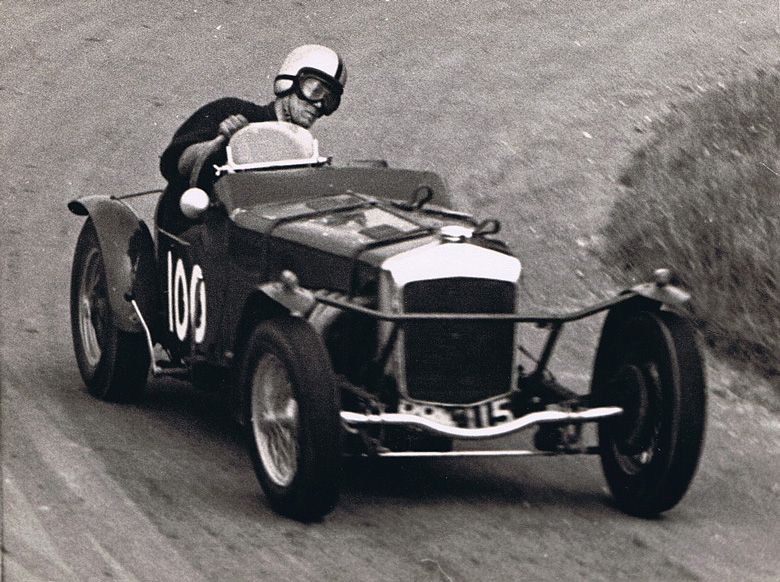
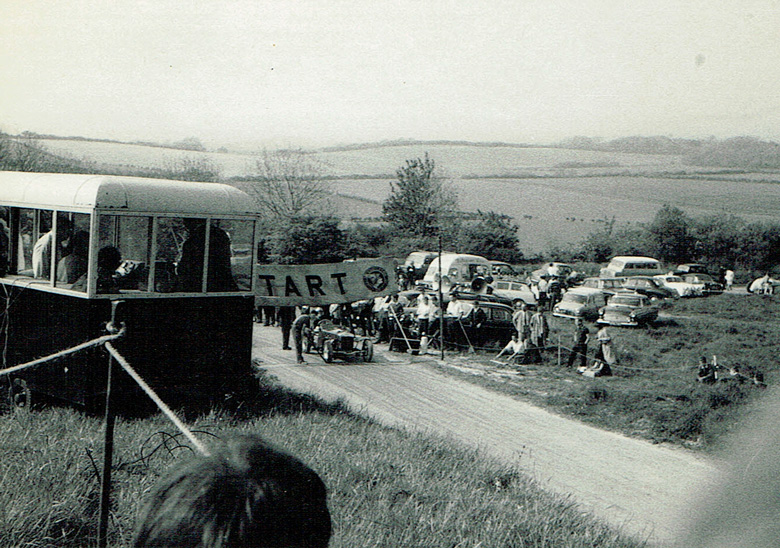
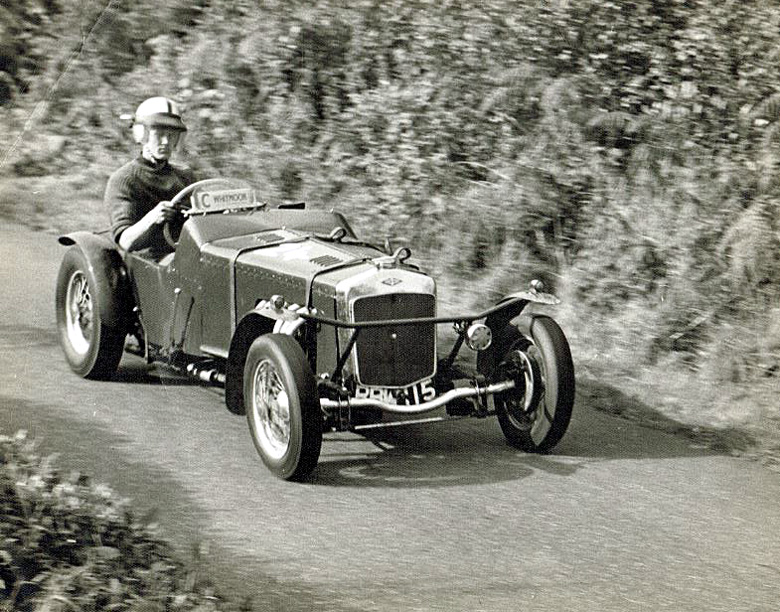
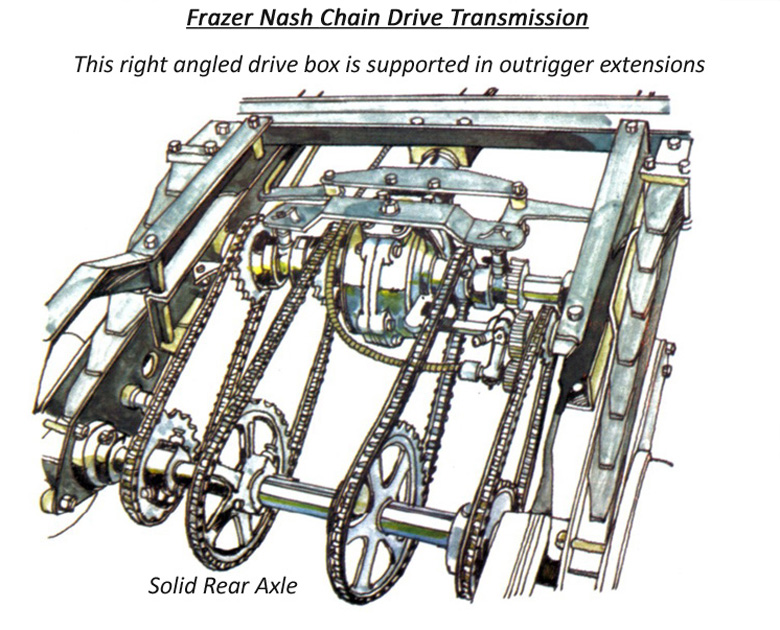
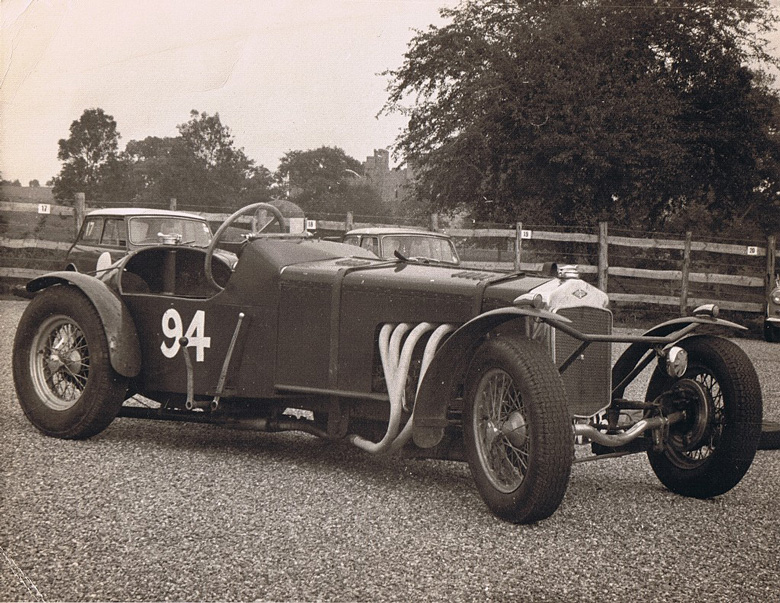
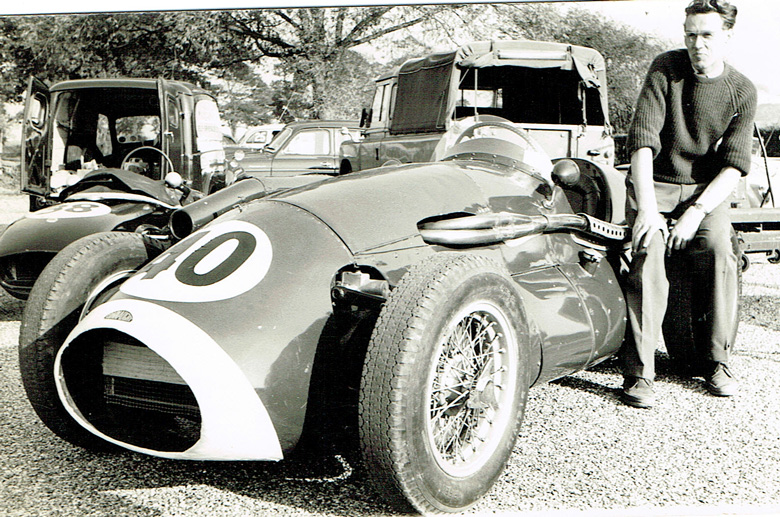
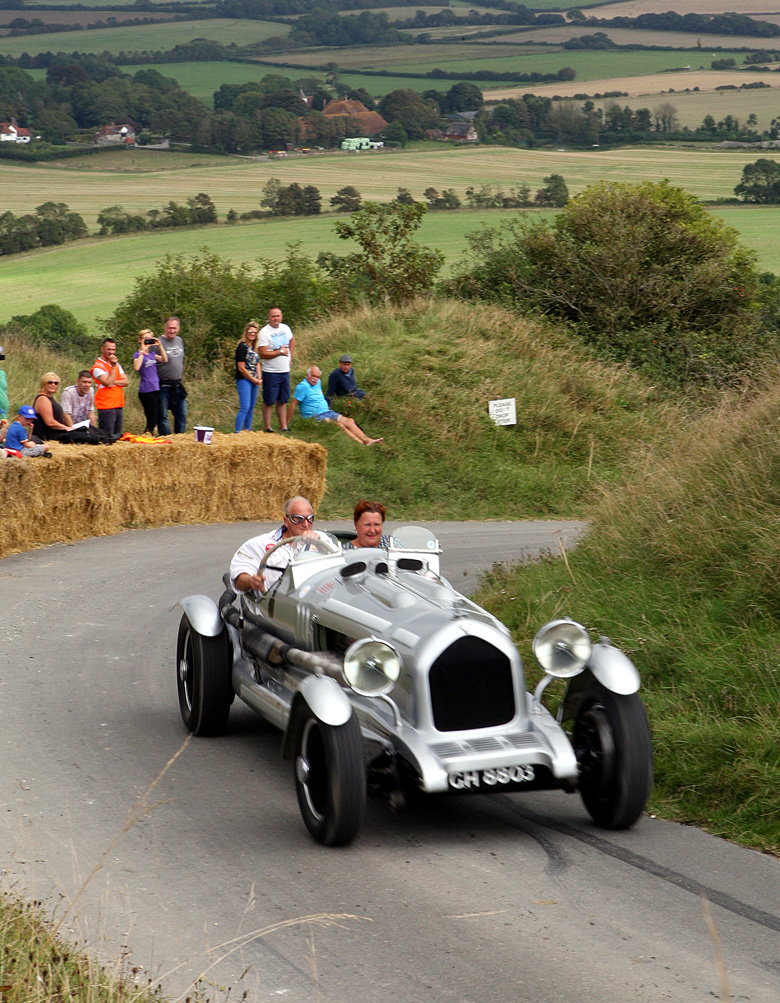
Thank you for this memory of those meetings from splendid days. see http://www.rick-ford.co.uk for late 1950s motoring days.
Great read. Peter may have one of the best scrap books of vintage images around judging from these few examples. Push for more Giddings ramblings. His cars today stand out in an vintage event and he can peddle them quite quickly.
Let’s have more Giddings! Really humorous reading of what it was like in the early days. Peter Brock
I am reminded of my old HRG when I look at the Frazer-Nash. The dangling front axle, the lack of hydraulic brakes, the flexible chassis and other anachronisms. They did corner well, with the inside front wheel also dangling and spinning freely. They were menaces on the road when compared with any modern car, but loads of fun to drive.
Don
Thank you Peter for an excellent but short article. I own a post war Frazer Nash Targa Florio which held the 2 litre sports car record at Firle when driven by Ray Dilley.
Robert Mansfield
Thanks Peter for some marvelous insight into the early days of your ‘career’ as a custodian and racer of much rare automotive history. Hope we’ll be seeing several more tales from you. A review of your Lancia D-50 recreation would be most appropriate, now that this car is on the track again.
Bless you for presenting the D-50 for what it is; not a magic ( and mythical) discovery of an original.
Were it not for efforts like yours, we’d never again see a D-50 in action.
Ray Dilley was a hero of mine! Living in Hove, Sussex, with a wonderful used car sales corner showroom (with a large MG sign outside), his oh so beautiful Frazer Nash Targa Florio was also driven with deceptively fast/ smooth precision at Goodwood (where I first worked as a time keeper’s spotter, and then debuted myself and my Frazer Nash) resulting in Ray achieving some impress giant slaying.
Basil Bowman and I often reminisce about Ray, and just where his always immaculately presented Frazer Nash Targa Florio went….. thanks to Veloce Today, we now know! Where do you live, as Basil, who still resides in a mews house within a few yards of the site of Ray’s showroom, would love to see the Targa Florio again!
Peter Giddings
Thanks for the kind words, Peter ….. hours in the day: remember, I am still working and racing!
Peter Giddings
Donald, of course the “G” in HRG is Godfrey. ‘HURGS”, as we called them, were (and are) great fun, and today quite the best value for anyone wishing to get into an early sports car, particularly as HRGs are, I believe, eligible for the Mille Miglia, etc
In fact, I am currently recommending to a friend the purchase of a locally available HRG, rather than a costlier XK-120.
I purchased my HRG 1500 from my friend, the late ageless Rivers Fletcher (read his wonderful book “Mostly Motor Racing”, ISBN 0-85429-461-9). The only problem was that Rivers’ signature color was a rather effete powder blue!
Hi Peter:
Excellent report on an interesting automobile. Hope to see you again at the Glen vintage weekend. If Clem were here, he would say hello too. I will forward him the story.
Cheers,
John R. Wright
Hello Peter,
Thank you for sharing your always insightful historical recollections…very much enjoy reading or hearing anything you have to share from your ‘early days’. Please keep it up.
Very best.
Tim McGrane
How kind of you, Pete. As you might imagine, to purchase, and then restore, my Lancia D50A cost a small fortune, so whilst I get to know this fascinating tricky car, the very book end to my Jano Alfas, it is heartening to learn that true and knowledgeable enthusiasts, such as you, appreciate my efforts. So many tales from my past adventures …. so little time! Best. Peter
Hi John: Thanks for your kind words. Hopefully, I shall get a better run with my D50A(r) at Watkins Glen in 2017 (or would you rather see/hear a Lancia D24/5?!) Best. Peter
Thank you, Tim. Your comments means a lot to me. Best. Peter